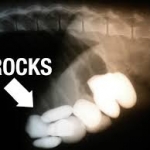So I have decided to call this series of , what I hope you agree are, interesting cat factoid blogs. I think it is not just me that has noted, but never truly understood why some cats react the way they do to catnip. For those of you that have seen their cat or cats get loopy around catnip, this should help you understand a little bit why.
It turns out, though, that scientists do not fully understand why cats respond to catnip. It is a traditional constituent of many cat toys. Yet not all cats respond to it. A single gene governs whether or not the cat responds, and in many cats, perhaps as many as one in three, both copies of this gene are defective. When the gene is defective, it apparently has no effect on behavior or general health of the cat.
The behavior release by catnip is a bizarre mixture of play, feeding and female sexual behavior, whether the cat itself is male or female. Cats may first play with a catnip toy as if they think it is a small item of prey. But they quickly switch into bouts of a seemingly ecstatic combination of face-rubbing and body-rolling, reminiscent of a female cat in season. Most cats will drool and attempt to lick the catnip. This behavior may continue for several minutes at a time, until the cat eventually recovers and walks away. But if the toy is left where it is, the whole sequence may be repeated 20-30 minutes later, although it may not be as intense.
There are a few other plants known to elicit the same response. They are the Japanese cat shrub or silver vine, and the roots of the kiwifruit vine, which originates in southern China. In the 1970’s, the first growers of kiwi vines in France learned this when they found that cats had come and both excavated and chewed their seedlings, much to their dismay. All three plants contain similar fragrant chemicals, thought to cause the responses in the cats.
By some accident of evolution, these chemicals likely stimulate the cat’s nose to trigger circuits in the brain that would never normally be activated at the same time. These chemicals evidently bypass somehow the normal mechanisms that ensure cats do not perform two incompatible actions at once. A cat in the throes of catnip-induced oblivion would seem vulnerable to attack, and since cats presumably don’t get any lasting benefit from their experience, it seems that evolution should have weeded out the gene responsible in those cats that respond to catnip. And, most species in the cat family, from lions to domestic cats, respond to these pants the same way, so the gene must have evolved several million years ago, when the cats branched off into different types. Why the gene remains remains a mystery.
Dr. Dawn
Please share and subscribe here








